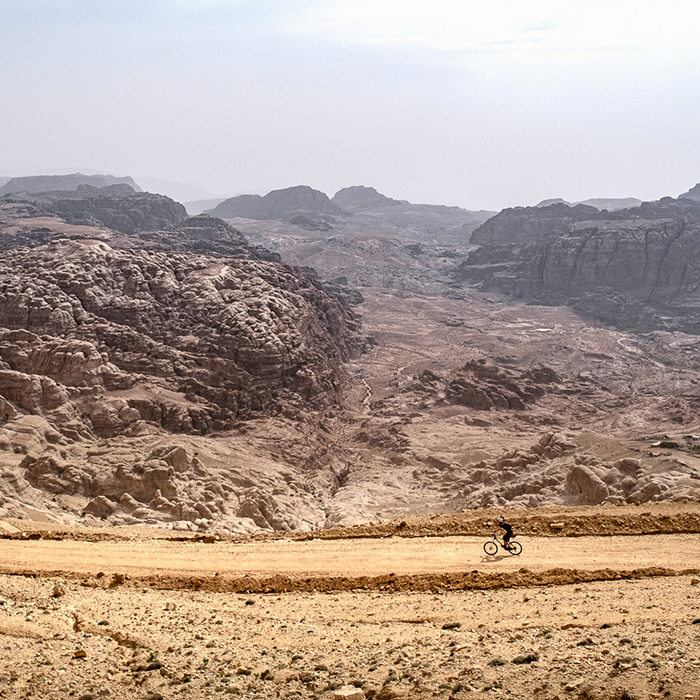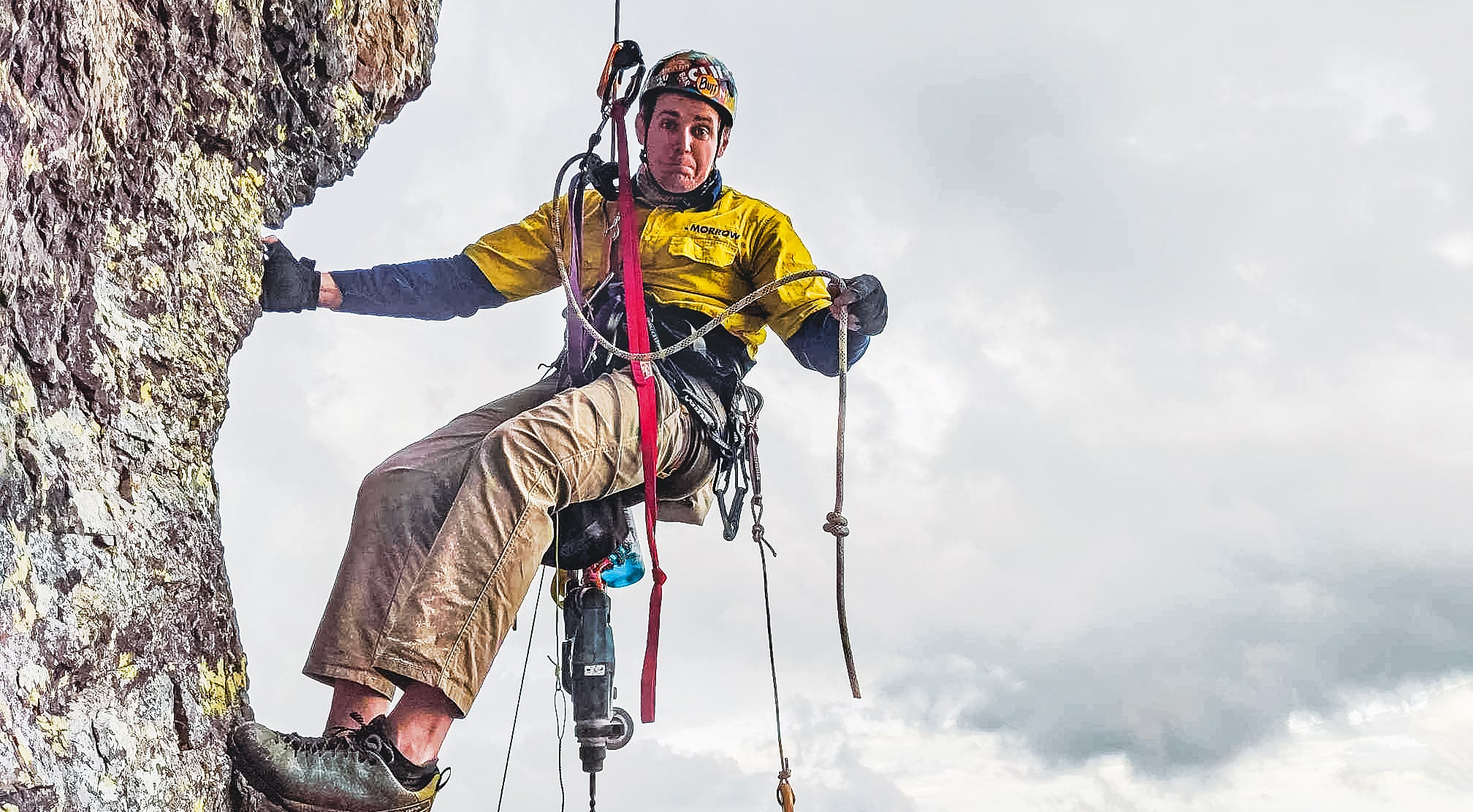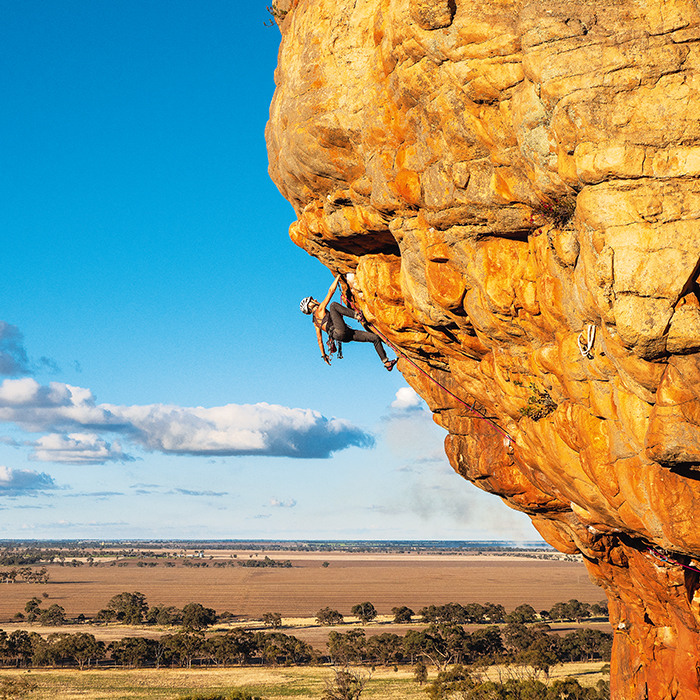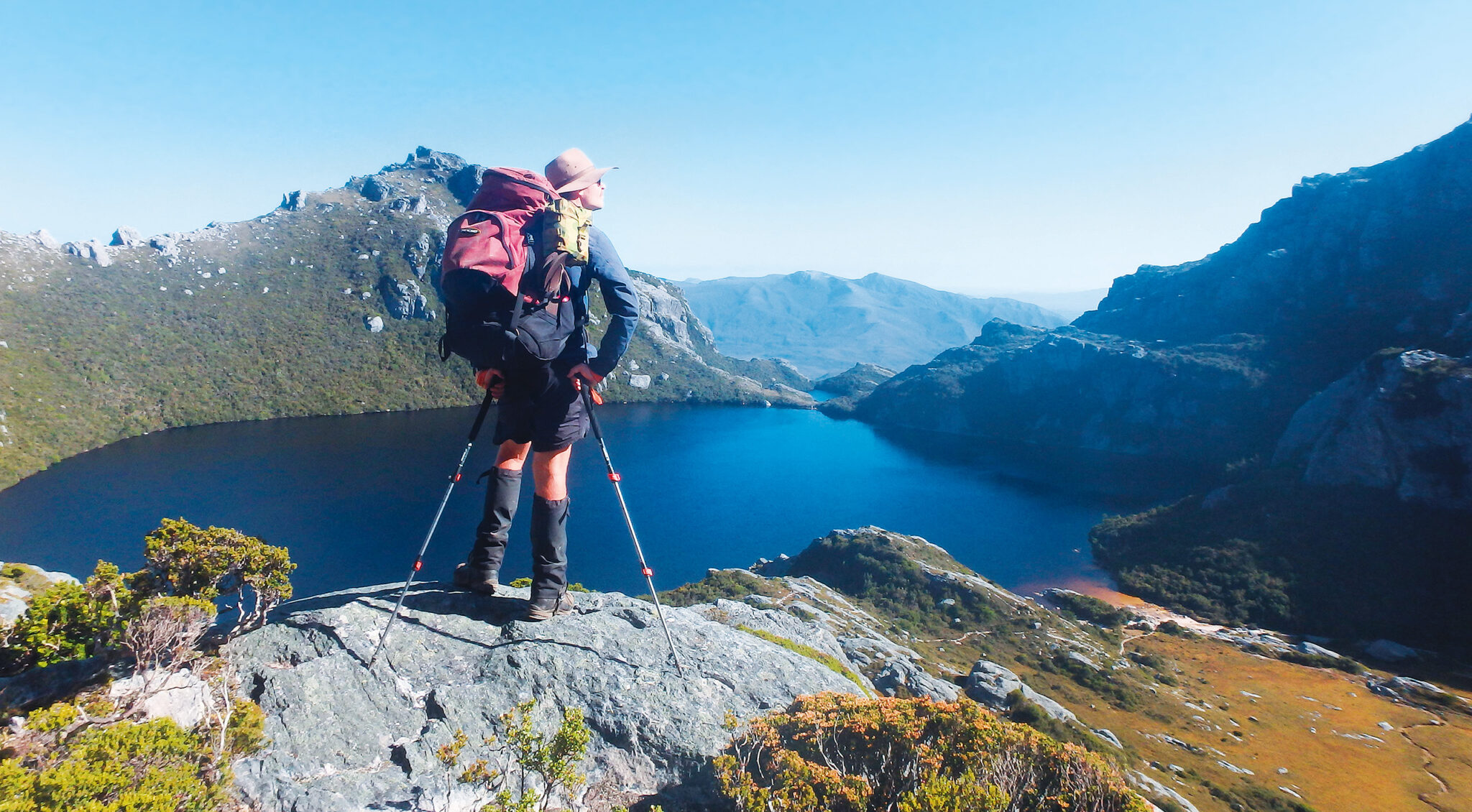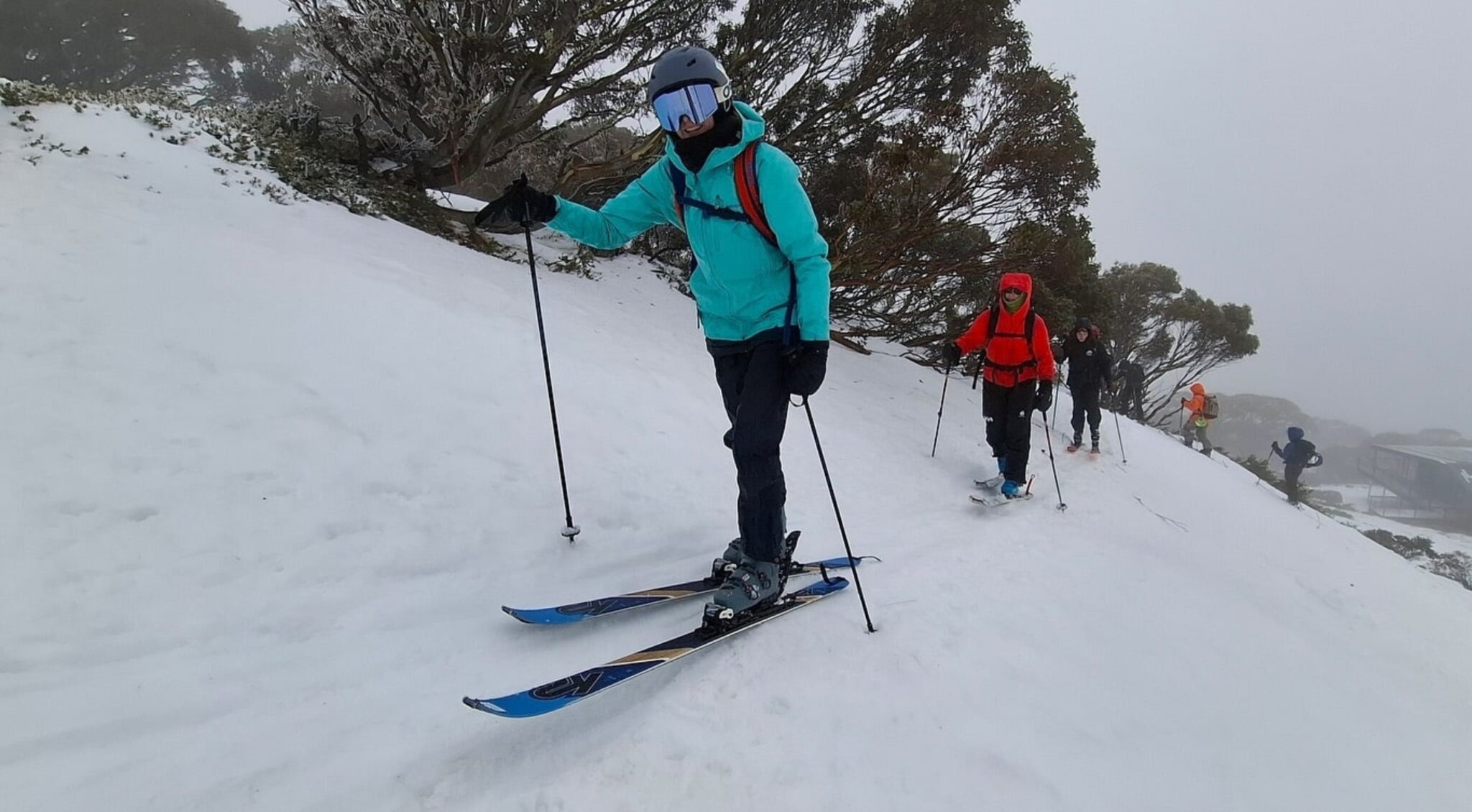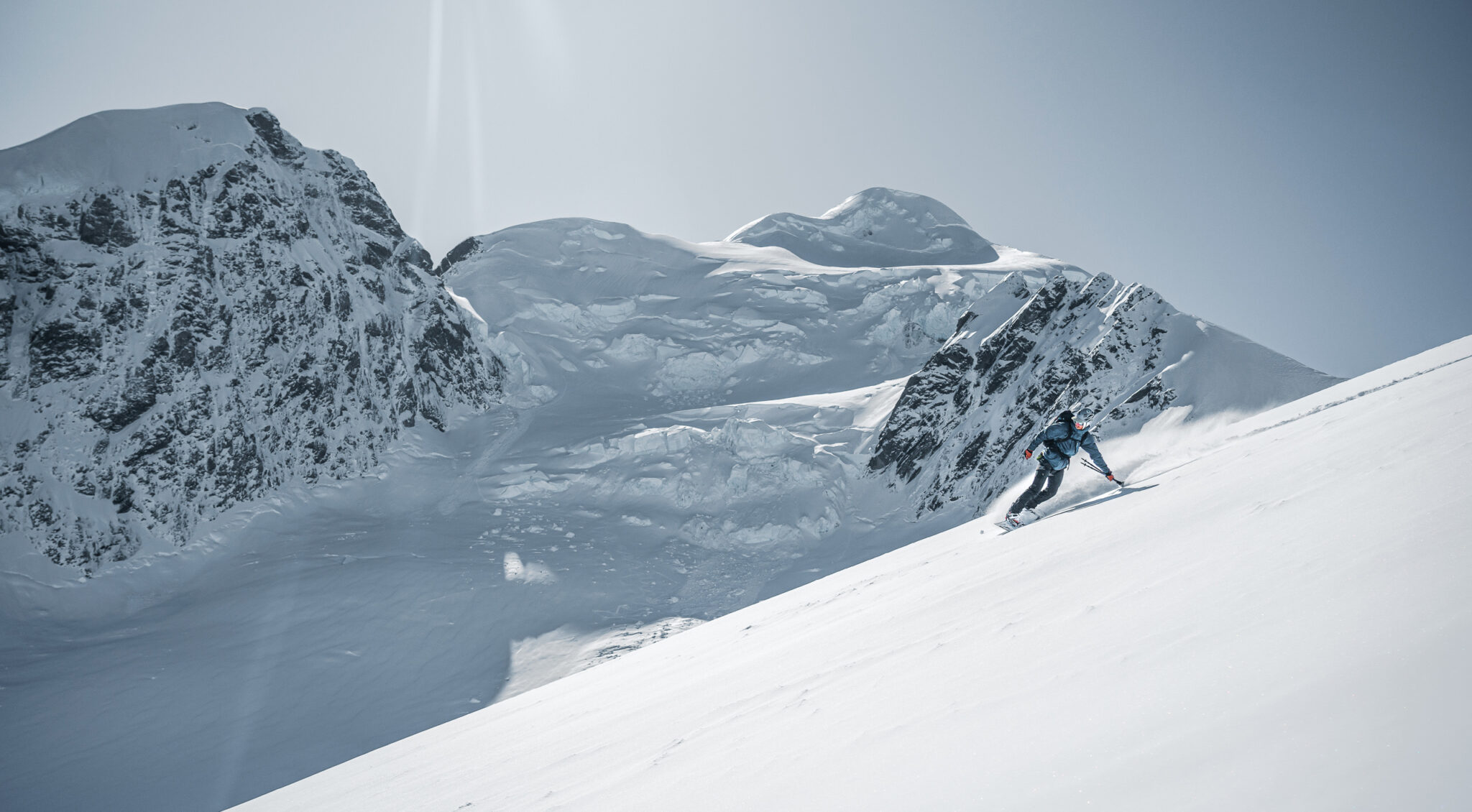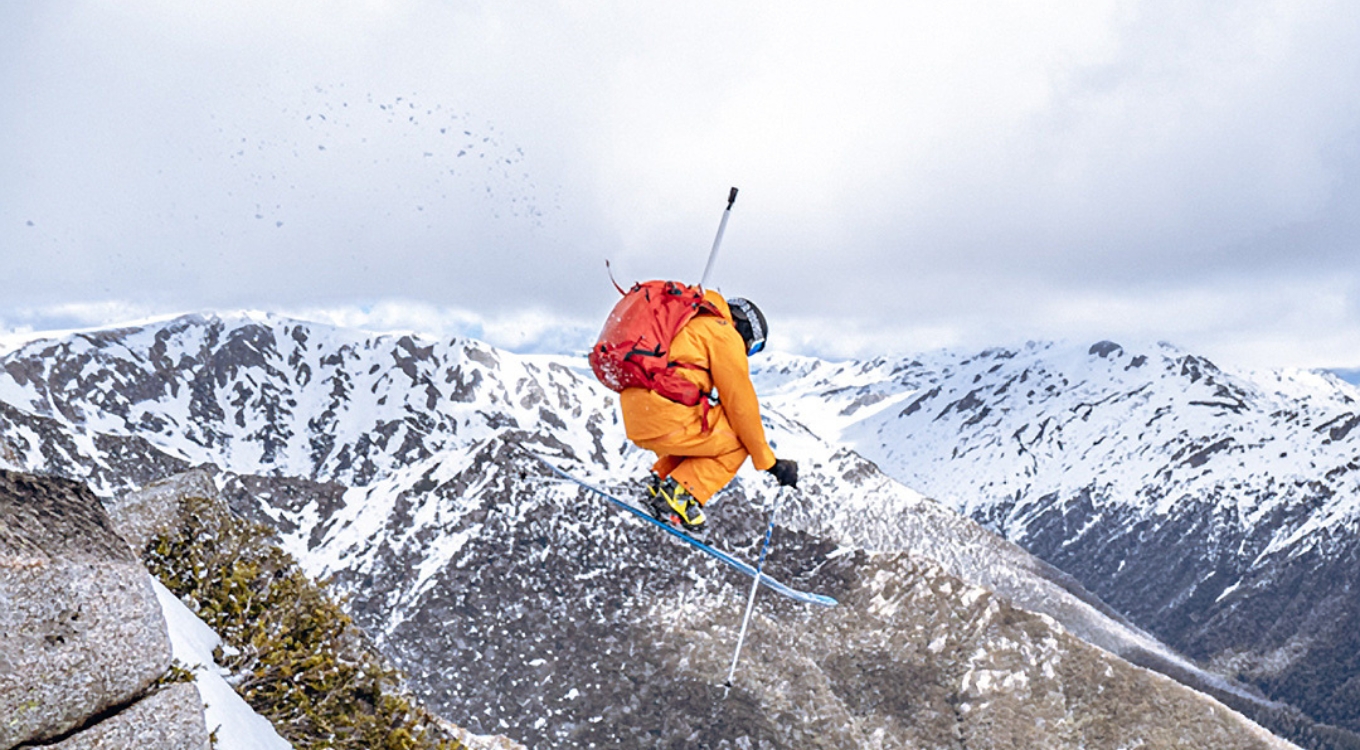The Jordan Bike Trail
Discover the diversity and generosity of the Middle East on the new Jordan Bike Trail.
Words & Photography: Tracey Croke
(This story originally featured in Wild #173, Sep-Oct 2019)
It’s Lawrence of Arabia’s fault: The multi Oscar-winning epic about the life of cult hero T.E. Lawrence has been widely lauded as one of the greatest and most influential films in cinema history. Scenes captured in the picture-perfect sands of Jordan’s Wadi Rum over half a century ago are still raved about today.
If you’ve seen those defining moments of Lawrence and his new-found Arabian blood brothers charging kohl-eyed on camels through the blazing desert, you’ll also know why I thought taking a mountain bike through sandy Jordan would be completely bonkers. But just like any country I haven’t actually visited, Jordan proves me wrong.
Jordan’s Got a Brand New Bike Trail
David Lean, Lawrence of Arabia director, worried that the rocky scrub of the Jordanian desert wasn’t sandy enough for Hollywood audiences, hence the repeated scenes of Wadi Rum’s sands. But that rocky scrub reality, which delves into lesser-known Jordan, is just the ticket for bike adventure.
Jordan has long wooed tourists with iconic crowd-pullers. There’s the world wonder of Petra—also immortalised in film as the ‘Lost City’ Indiana Jones visited in search of the holy grail. And the other-planetary Wadi Rum landed another backdrop role doubling as Mars in Ridley Scott’s The Martian. But few visitors venture beyond the country’s star attractions; it’s partly the reason the Jordan Bike Trail was conceived.
“I thought taking a mountain bike through sandy Jordan would be completely bonkers. Just like any country I haven’t actually visited, Jordan proves me wrong.”
“The idea was to create a trail that allows cyclists to experience the diverse terrain and hidden treasures of Jordan, while still visiting the famous sites,” says Matt Loveland, creator of the Jordan Bike Trail.
The result is a 730km challenging but not too technical through-country bike trail (roughly 60 per cent paved and 40 per cent jeep tracks) with a combined 20,000 metres of ascent and descent from the fertile north to the arid south. Along the way, the JBT plunges into the country’s history, archeology, culture, faiths, earliest civilisations, and—like the best of bike journeys—connects you with the people.
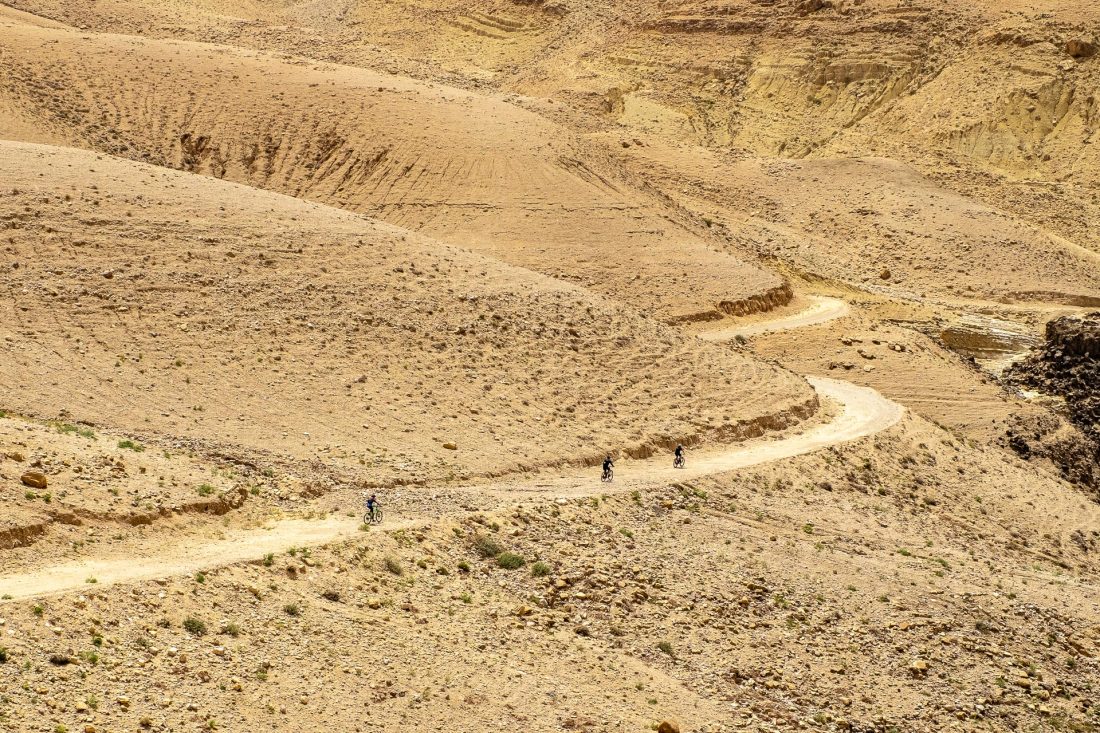
Matt and his family moved to Jordan from the UK ten years ago after being bowled over by the country’s beauty and hospitality. Soon after, the ex-chartered engineer founded Experience Jordan with a local friend. The vision was to highlight the country’s traditional, cultural and historical heritage. But that wasn’t their only goal. To create opportunities for locals, they worked with communities to create homestays and support for cyclists the length of the JBT. “As the trail develops, our hope is that it will continue to support many families across the country,” Matt says. The company also provides free maps and info to those cyclists who want to bikepack and/or take on the unmarked trail independently.
I’ve opted for a ten-day ‘highlights’ trip with a small group, support and several shuttled sections. It’s still a testing 450-kilometres under my own pedal power before I get to snorkel above the colourful coral of the Red Sea where the trail ends.
Getting Perspective
The perspective lesson starts at the beginning of the trail in the lesser-visited location of Umm Qais in Jordan’s north, not far from the Syrian border. Here we visit the ruins of ancient Gadara, one of the ten Decapolis cities that operated on the eastern frontier of the Roman Empire. These days Gadara is an upcoming visitor site, like an unkempt teenager trying to find itself in a confusing new world.
We stroll among weed-riddled basalt columns and climb a ghostly amphitheatre brought back to life by the buzz of local youths. Gadara’s hilltop vantage point offers a bird’s eye view over Israel’s Lake Tiberias, (the Sea of Galilee) and the disputed Golan Heights.
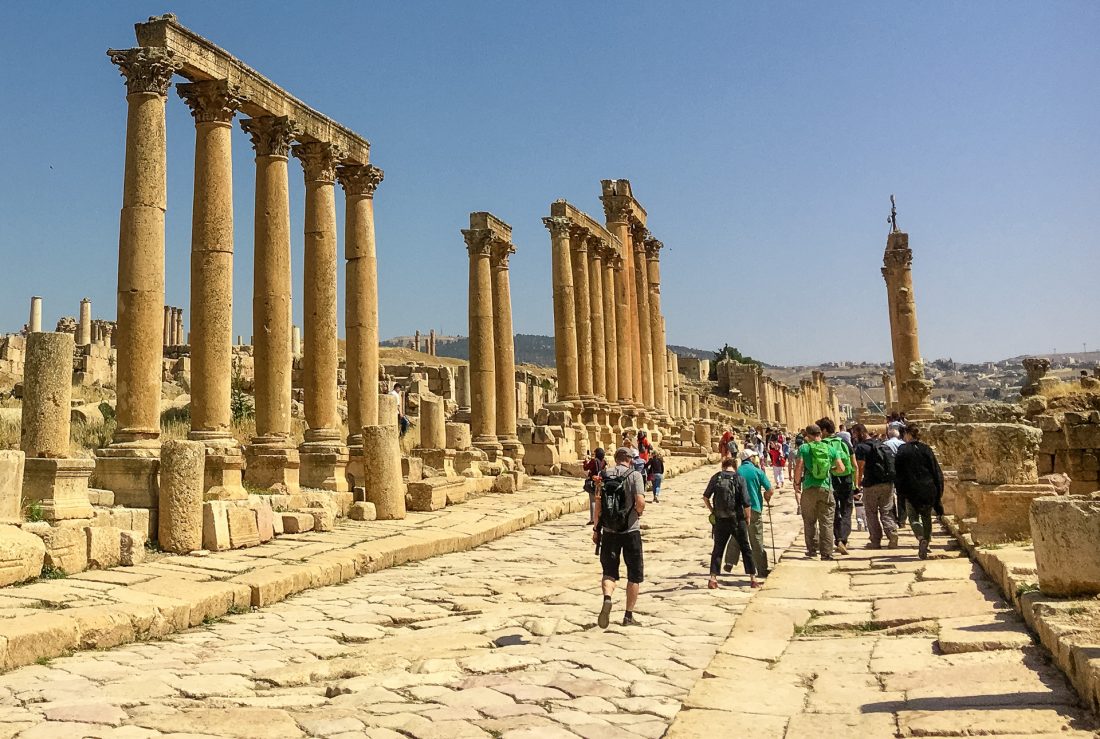
Squinting through the haze, I sense why people might hesitate to come here. Along with Syria and Israel, Jordan also shares borders with Iraq, Saudi Arabia and Palestine. You would be forgiven for thinking that tensions in neighbouring countries impact Jordan’s safety. But the country—which has long remained peaceful and stable—is often described as an oasis of calm in a troubled region.
Although Jordan is not perfect, and there have been a handful of attacks (almost all on local security forces), this needs to be put in perspective, and statistics tell a story you might not expect. The Global Terrorism Index indicates Jordan experiences less terrorism than many European countries, and it ranks way better than Thailand—a popular destination for Australians. Crime, too, is low compared with many European or US cities. As Matt puts it, “I feel safer bringing up my three daughters in Jordan than I did in a city in the UK.”
“With each dawn, a new landscape emerges. Just as I think I’ve got the shot of the day, there’s a more staggering vista around the next bend.”
The country is also remarkably generous when it comes to those escaping conflict. For decades, this small Arab kingdom has offered a home to waves of people fleeing chaos. Jordan hosts the second highest share of refugees per capita on the planet, and a recent census shows one third of the country’s 9.9 million population have another homeland.
If you could pick up this trail and give it a shake, it would jangle with gemstones of history. Time will need to be factored in to appreciate the time capsules that tell the story of the region, such as Ajloun Castle, a 12th-century Muslim fortress built specifically for defending the area against crusader attacks. Then there is biblical Madaba – also known as “The city of mosaics” after the discovery of the oldest known map of the Holy Land. This unique sixth-century treasure, which lies on the floor of a Byzantine church, was painstakingly assembled from more than a million pieces of coloured stone. John’s baptism of Jesus in the Jordan River, and the allotments of the 12 tribes of Israel are featured on the map.
Rolling Out
From Umm Qais, the Jordan Bike Trail starts gently enough with a mixed melody of rolling hills, olive groves and almond trees. Green fields give way to the occasional rocky outcrop. Although opportunities to ride single trail are few and far between throughout the journey, my technical skills are put to use on the first descent to skip over the deep scars of recent flash flooding. This dump of rain, however, was a welcome nuisance. Jordan is one of the world’s most water-scarce countries, despite it having significant territory within the ancient “Fertile Crescent”, where agriculture and the earliest civilisations evolved.
This lengthy history and Jordan’s location at the crossroads of Africa, Europe and Asia is partly what makes the journey so spectacular. The region was the hub of post bronze-age kingdoms that created a network of ancient trade routes. First-century Nabataeans transported valuable spices and frankincense to their capital in Petra. Since then, pastoralists, nomadic tribes, Bedouins, crusaders, religious pilgrims, Ottomans and Romans have all left veins of tracks for us to follow into the heart of this land.
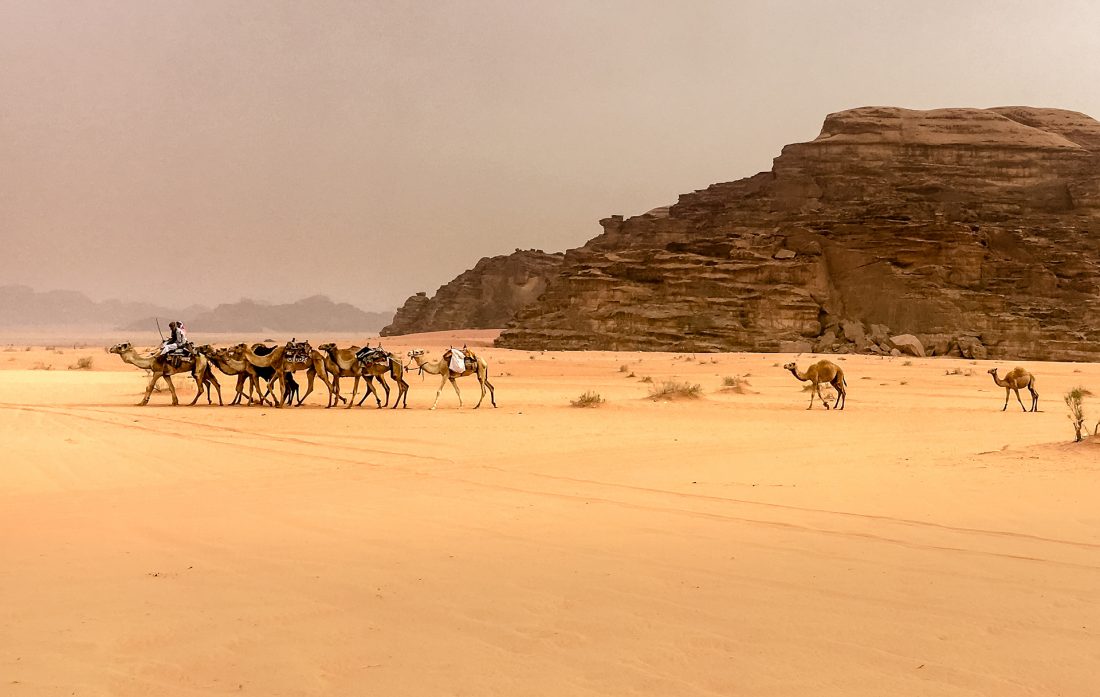
If you could pick up this trail and give it a shake, it would jangle with gemstones of history. Time will need to be factored in to appreciate the time capsules that tell the story of the region, such as Ajloun Castle, a 12th-century Muslim fortress built specifically for defending the area against crusader attacks. Then there is biblical Madaba – also known as “The city of mosaics” after the discovery of the oldest known map of the Holy Land. This unique sixth-century treasure, which lies on the floor of a Byzantine church, was painstakingly assembled from more than a million pieces of coloured stone. John’s baptism of Jesus in the Jordan River, and the allotments of the 12 tribes of Israel are featured on the map.
As interesting as they are, it’s the mind-bending geology in places that brings me to a gawping stop. Tectonic activity, which created the Syro-African depression now known as the Jordan Rift Valley, left behind some particularly hypnotic formations. One weird rocky wonder looks like giant, deep-purple popcorn exploded on top of a burnt orange plateau. Another seems as if the moon crash-landed in the jaws of the rift’s upshifted flanks and disintegrated into a million pieces.
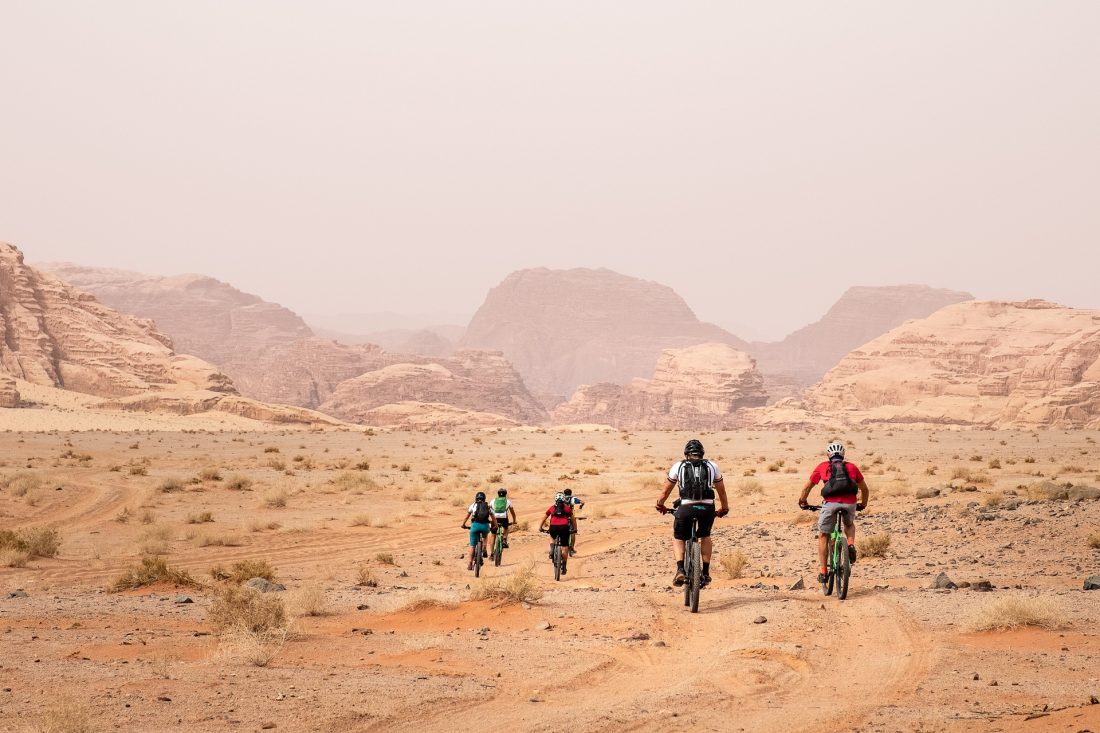
With each dawn, a new landscape emerges. One day, we follow a rocky ridgeline of limestone past water-filled canyons and crusader battlements. The next, shades of aubergine, caramel and olive shift along a crumpled landscape of abstract topography. Just as I think I’ve got the shot of the day, there’s a more staggering vista around the next bend.
Generous Jordan
Landscape, history, culture, food and people are elements that turn any through-country trail into enriching experiences. That said, each journey is defined by an overarching aspect. The standout in Jordan is generosity. Along the whole trail, hospitality plays continually in the background like a favourite looping tune. Whether it’s lunching in a Bedouin tent or taking pungent, cardamon-infused coffee from the flask of a farmer, everything is offered with overdoses of enthusiasm and lashings of pride.
Our introduction to Jordanian hospitality is a homestay with the Dweekat family in the tiny village of Orjan. At dinner, Issa and Eman—who’ve developed their home to include several comfortable en suited bedrooms—shatter any hopes I had of weight loss. Small “mezze” plates, a seemingly endless stream of them, are replaced as soon as we get through them. Traditional hummus, baba ghanoush (seasoned eggplant with olive oil) and stuffed zucchini are just a few of the ‘tidbits’ offered before we get to tackle mansaf—the national dish of Jordan—made from roasted lamb, fermented yogurt, spices, and rice.
One night is spent wild glamping in a wadi hosted by Abu Saif and his family, one of the local operators supported by Experience Jordan. Further down the trail we lunch with Abu Sabba in his Bedouin tent. He shows us old photos and we share laughs re-enacting moments from 30 years ago.
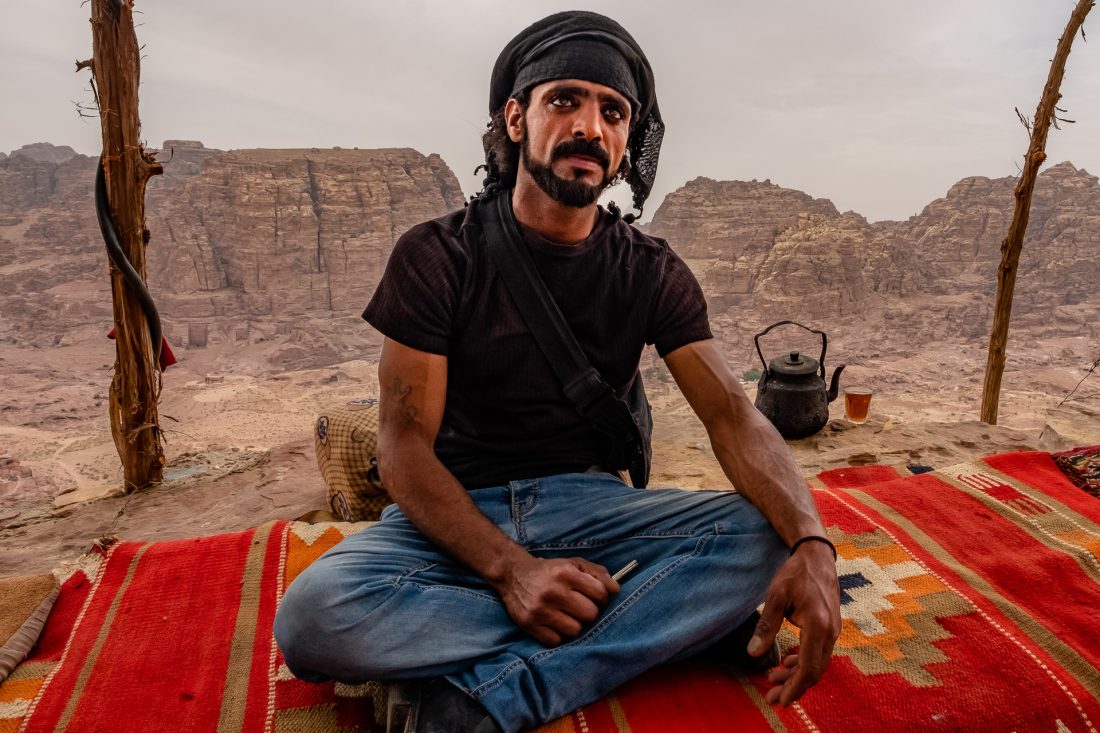
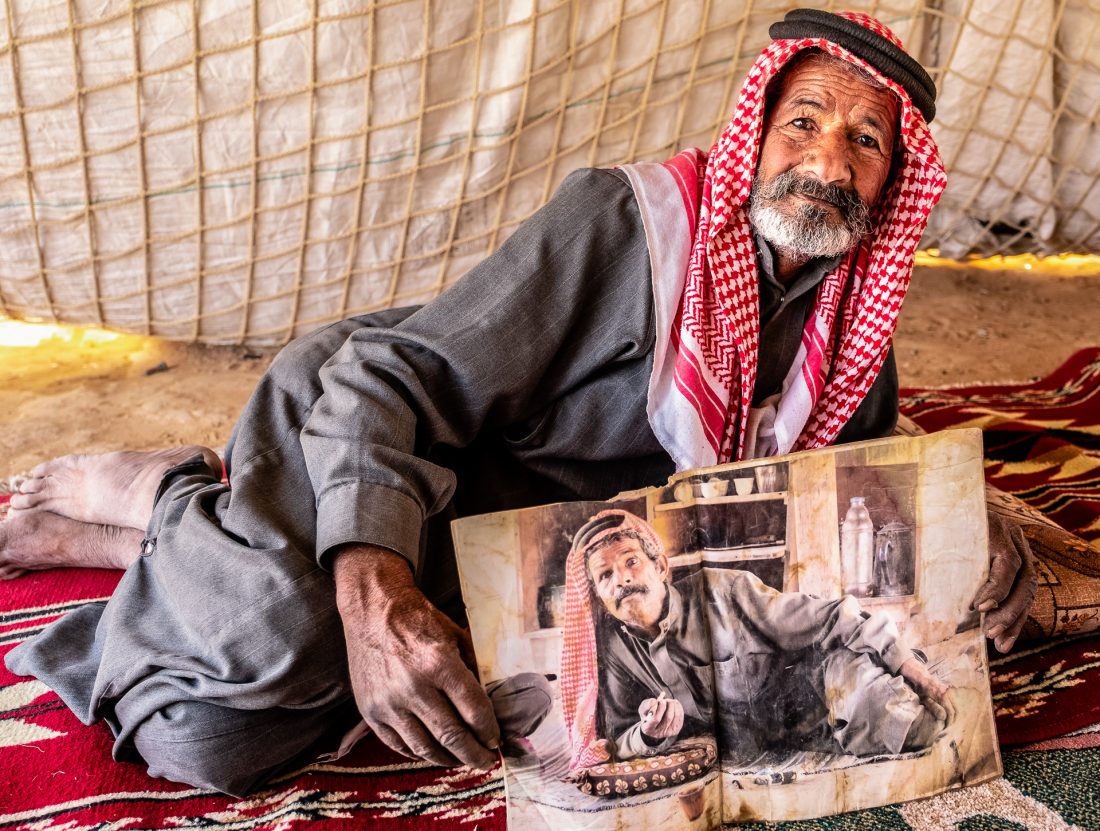
A Diverse Landscape
Over the days, we crisscross mountains, plateaus and chaotic canyons, and thunder down descents into the valleys (wadis). The trail diversity peaks as we enter the Dana biosphere, Jordan’s largest nature reserve covering some 300 square kilometres along the face of the Great Rift Valley. The desert-to-forest system has four bio-geographical zones supporting species from Europe, Africa and Asia. According to UNESCO, 690 plants and 449 animals have been recorded—25 are endangered, including the sand cat and Syrian wolf.
When the lumpy landscape bleeds dusky pink, about two-thirds into the journey, I know the trail is teasing me into a world wonder known as the “rose city”. Dating to around 300 B.C., Petra (Rekem back then) is the remarkable rock-carved capital of the secretive Nabataeans. Revered as one of the ancient world’s most gifted peoples, the Nabataeans were famed for (among many attributes) their ingenious water collection systems invisible to passers-by. Nowadays, Petra is one of the world’s most famous archaeological sites, but historically the city was an important crossroads between Arabia, Egypt and Syria-Phoenicia. During Hellenistic and Roman times, it became a caravan centre for the incense of Arabia, the silks of China and the spices of India. The city—a collection of 800 buildings covering a colossal 250 square kilometres—was actually half-built, half-carved into mountains riddled with passages and gorges, with the main entrance being a 1.2-kilometre long chasm known as “The Siq” (shaft).
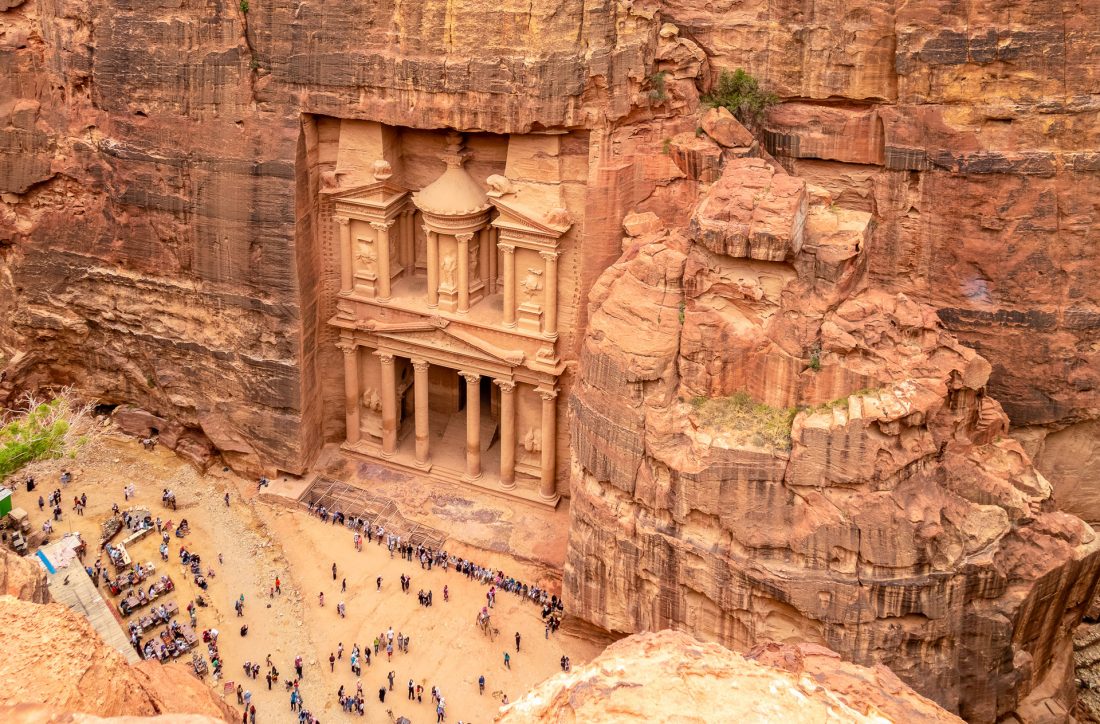
On the downside, the beauty of the trail highlights Jordan’s litter blight closer to the towns. But here, too, the trail is having an impact. Waste reduction—especially plastic—is a new concept to the country, but many local hiking and cycling groups are working to educate people on ‘leave no trace’ principles. “Schools are teaching it too, so change will come,” says Matt.
When it comes to great mountain bike adventures, the Jordan Bike Trail might not seem an obvious contender—its highest point is just under 1700m, although it does, however, have plenty of quad-testing climbs. The fun of this journey is not so much the trail itself, but where it takes you; into the motley wilds of lesser-known Jordan.
There are times when I feel like I’m riding wide-eyed through a 3D encyclopaedia, days when the environment is so unrelentingly arid and remote we resemble fleas on the landscape. While these mountains may not have the might of loftier ranges such as the Himalayas, they still possess the power to shrink your human existence into microscopic insignificance. And that’s when I know I’m somewhere really special.
With weary legs and most of the trail behind us, Wadi Rum turns out to be less of the war of attrition I expected, and more of a harmonic bike foxtrot. A mix of soft and hard sand makes progress slow-quick-slow enough to appreciate the unique monolithic features that helped this mountainous desert achieve UNESCO world heritage, a status cemented by the rock art, petroglyphs and archaeological findings that span all eras from the Neolithic to the Nabataean.
Cloud cover brings some respite to a blazing finale in the saddle. The sky shimmers pink, and yet, the desert still dazzles golden. Right on cue, as if the director just shouted “action”, a camel train appears in the distance. Lawrence of Arabia infiltrates my thoughts once again. Except this time, with the Jordan Bike Trail behind me, I know there’s so much more to this country than a sweaty-faced slog through the sand
CONTRIBUTOR: Award-winning travel journalist Tracey Croke is an expert in following whims and getting lost. Her woeful map reading skills are overlooked if she brings back a good story.

